It sometimes seems as though gardeners talk about little else but the weather. There is good reason for this; the conditions that favour the garden and those that favour the gardener are quite different. Gardens predominantly like rain and warmth, with a sensible amount of sunshine added in for good measure. The gardener prefers it dry, warm but not too hot if they're having to work outside.
There are gardeners and plants that thrive in hot and dry conditions. These are the succulent plants grown by those people who love the heat and the sunshine. The preoccupation with sunshine is beyond me; when it's hot and sunny I withdraw to the shade.
Most garden plants actually do perfectly well shaded from the heat of a hot summer's day. We tend to think of full sun as a requirement for absolute exposure from dawn to dusk, but as long as plants get around six hours of reasonable sunshine most will be fine. Sure plants will cope with stressful conditions but they don't actually like them. We've all seen plants struggling when it's hot.
The drought of 2022 was quite an eye-opener for me. The South West of the UK didn't get quite as hot and dry as the South East, but we're used to a more benign climate here and choose our garden plants accordingly so we were still concerned about our gardens. At the time I was looking after a garden where a great deal of effort was put into keeping a few key plants watered. There's nothing quite like carrying big 20 litre drums of water around a five acre garden in the heat of the day to open the mind. I became drawn to the question of why some plants were doing really well without any intervention?
The garden was around five acres in all, steeply sloping and south facing. The client had spent the last 40 years planting trees and shrubs, so a sizeable proportion of the garden was essentially woodland. Beneath the canopies of tall magnolias, cercidiphyllum, acers and a glorious tulip tree were rhododendrons, camellias, hydrangeas and all sorts of shrubs and herbaceous plants. The original garden was four acres overall but, 20 years or so ago, the client bought an extra acre of ground. This was where all of the struggling plants were.
We were spending whole days doing nothing but watering the plants in this one area, while four acres of garden thrived without issue. Rainfall was uniform over the whole site, which is to say nothing for eight weeks and days of blistering heat. Why were the plants in the older bit of the garden doing so well without any supplemental water?

We gardeners know that big trees take water away from smaller plants below them. Big plants take from little plants; the cruelty of nature.
Yet I keep seeing the opposite happening. I see plants growing under trees visibly less stressed than those growing with, in principle, less competition and likely more attention from the gardener. There's definitely more to this than simply a matter of keeping the plant watered when it's hot and dry. My strong suspicion is that the cooling effect of a tree's canopy, or that of several trees, protects plants from the harmful effects of strong, direct sunlight. We know that ultraviolet light has an effect on plants because the colouring of some plants is richer when they're grown in full sun than in shade. My skin burns and tans if I'm out unprotected in strong sunshine, so why shouldn't strong sunshine have an adverse effect on plants that aren't used to it? Some plants actually bleach or burn with exposure to full sun.
We know that plants lose water through their leaves through the process of transpiration, and we know that some plants like ligularias droop their leaves pretty much as soon as the day gets a bit warm. When it's very hot we see wilting leaves of hydrangeas, geraniums and other plants; we see them and think they must be dry, but the following morning the leaves have recovered even though the plant hasn't been watered. This wilting isn't the plants going dry, it's a symptom of them getting hot.
It makes sense that the plants that thrive in our gardens when it's cool and damp will struggle when it's hot and dry.
Case Study: the Mediterranean garden at RHS Wisley
On the 3rd of July 2025 I made a specific point of visiting the Mediterranean planting at the Royal Horticultural Society's garden at Wisley in Surrey. The climate of the South East is normally much drier than that of the South West, and the RHS is often telling us that to climate-proof our gardens for the future we must be planting more plants from the Mediterranean region.
They'd had a significantly warmer period a fortnight before, so I was curious to see how well the plants were doing. The soil is sandy, but that shouldn't matter to well-established drought tolerant plants even though the area is not irrigated.
What struck me was how bad it actually looked. Staples of the Mediterranean flora such as phlomis and cistus were wilted and even crispy in some cases. A pine, presumably a Mediterranean stone pine, was stone dead. Some plants were doing better than other but overall it was not a thriving bit of the garden.
I was struck by two thoughts. First was the irony that these plants were overlooking Wisley's irrigation pond when several plants were in clear need of water. The second thought was that if this is how the garden of the future should look then we're going to have to reassess what we think of as a beautiful garden.
It's not just shade from above that matters. Over and over I've seen borders exposed to hot full sun where plants are rammed in tightly together and looking perfectly happy, while nearby plants spaced further apart and thus more exposed show signs of stress.
I love a gadget: a hand-held digital thermometer to measure air temperatures and an infra-red thermometer to measure surface temperatures seemed good purchases, and it didn't take long before I started making interesting observations. The surface temperatures of soil or mulch directly exposed to sunlight can be remarkably high, even if there are plants around. However surprisingly little shade made a huge difference in bringing those temperatures down.
It made sense; if I want to cool off on a hot day I stand under a tree because that's where it's cooler. However the air thermometer kept telling me time after time that the air temperature in full sun is pretty much the same as it is in shade. Ridiculous, right? It's clearly going to be hotter in full sun.
My skin is a surface, and when I started looking at the difference in temperature between the surface of my skin when I'm standing in full sun and in shade things got interesting. It's not me that gets hot when it's sunny, it's the surface of my skin. It's the same when stone paving slabs get hot in sun, and when the sun warms up the surface of a pond while the water below remains cooler. To stop that sunshine toasting me like a slice of bread my body sweats, losing water. My body also makes me question why I took up a career that involves being baked in hot sunshine all day, but that's a different matter....
Leaves warm up in full sun. They have to warm up; it would defy the laws of physics for them not to. Water is lost, and when it can't be replenished, or can't be replenished quickly enough, the plant suffers and wilts.
The hottest surface temperature I measured, and bear in mind this is the temperature at the exposed surface of the soil and not further down, was 65°C, or 149°F if you prefer. Do I believe the thermometer? Was this a mistake? I could certainly feel the searing heat through the soles of my work boots. This reading was taken at the base of a rhododendron that was struggling in full sun. Despite regular watering the leaves were drooping and the whole plant looked miserable. As an experiment I applied a deep layer of loose, dry organic matter – it was shredded bracken in this case but something like straw or leafmould would work – around the base. Within 20 minutes the leaves of the plant were no longer despite the plant receiving no extra water.
It takes surprisingly little shade to bring surface temperatures down considerably. Light shade cast by billowing grasses, or the shadow of a smallish herbaceous plant, can bring soil surface temperatures down by 20 degrees or more. This has to have an effect on plants, especially those whose root system is closer to the soil's surface.
So is it the temperature of the leaves that matters or the temperature of the soil? My feeling is that it's both, but varies from one genus of plants to another. I've seen mature hydrangeas in a garden wilted and stressed in full direct sun on a hot and sunny day, while at the same time other hydrangeas look absolutely fine tucked under trees and closely surrounded by other plants. In both cases the hydrangeas were of a size where the top of the plant will be amply able to shade its own roots, so there won't be an issue with the soil at the base of the plant getting too hot. What was particularly interesting to see was that the level of stress differed visibly between the side of the plants facing the sun and those further back. The air temperature won't have differed and the soil temperature likewise; the only logical conclusion is that the exposure to the full intensity of the sun is what was causing damage in these cases.
What if the humble mophead hydrangea is one of the most important plants for observing the effects of heat and sunshine in the garden? They react quickly to changes in their conditions, and once they get to a larger size it becomes easy to make useful deductions just by looking at the plant. If you're out somewhere with big hydrangeas and it's hot and sunny, take a look and see if you can make any observations of your own.
In the spring of 2022 I had planted a large number of rhododendrons in the woodland garden at Great Bidlake Manor in Devon. I had no idea that just a few months later there would be a serious drought. There was no option to water these plants; they had to fend for themselves. Rhododendrons are not famously fans of drought, yet we didn't lose a single plant.
Not one out of the 20 or so planted that spring died.
Not only that but they looked pretty healthy too. I am absolutely convinced that it was not only the woodland canopy that protected them but the tall swathe of red campion, Silene dioica, that thrived that year. Tucked away below the sea of bright pink flowers, the rhododendrons were kept cool and shaded. Yes the campions and the trees above will have been taking their share of the meagre supply of water in the soil but the arrangement clearly had some benefits.
This is counter-intuitive I know. The idea that weeds compete with plants for resources is ingrained in gardening lore. We know it's true, we've always know it's true. But what if it's not quite true, or is more complex than we've been told?
A major flaw of modern gardening is that it has become rather academic. Gardeners can quote Christopher Lloyd, Beth Chatto, Alan Titchmarsh, Monty Don and so on but have generally lost the ability to observe and deduce. A famous gardener said something is so and thus it's gospel. I urge gardeners to take the pronouncements of others as guidelines and suggestions rather than hard truths. Yes that applies to what I'm telling you too. There's too much rehashing of old ideas without putting them to anything like a rigorous test, and we've ended up with gardeners blindly following advice that is either misguided or sometimes just completely wrong.
Take my ideas and see if they work for you; hopefully your own observations will feed back into a better understanding of how we garden. The thermometers I have are cheap to buy and easy to use, and will help quantify the results of your own observations.
Climate models for both the near and distant future are complex. We're told by popular resources that we should rip out our gardens and plant 'climate-proof plants', but there are problems with this advice. I'm highly suspicious of the idea that simple changes in planting are supposed to counteract complex future climate patterns, and I'm really not convinced that continuing our present obsession with sunshine gardening is the model for the future. Indeed I'm not convinced that it's the model for now.
Incorporating small, medium and, where room allows, large trees and shrubs into gardens is the way forward. This will mean losing some of the precious light of winter, for even bare branches cast a shadow, but by deflecting some of the direct sunlight that hits our gardens we can hopefully mitigate problems associated with heat. Shaded paths and seating areas will allow us to enjoy our gardens in comfort on hot and sunny days, but we can still have pockets of sunshine too. Rather than aim for wall-to-wall sunshine all day I think it would be prudent to deliberately plant the garden so that summer shade is cast at least during the hottest parts of the day.
Yes we will have to alter our planting schemes over time. Increased rainfall and prolonged drought will curb our ability to grow some plants and open up the opportunities to grow others, but nothing is really being discussed about how we're supposed to grow things. It's assumed that we carry doing what we do now and the plants will take care of the rest.
It's difficult to argue that we should garden differently now in preparation for potential conditions in 50 years time given that few of us will be around to witness them. Maybe in 50 years, if I make it to my 90s, I'll regret those words. However we are seeing challenging droughts and extreme rainfall, with associated water restrictions and floods, at the moment and we might as well be looking at ways to cope with these problems in the short-term too. Long-term climate predictions are important if we're choosing trees that we hope will last centuries, but away from forestry and woodland management, big country estates and certain public gardens there is a need to also work for the benefit of present day gardeners.
Plants are community beings. Very few plants live in isolation to others, and those that do are either special cases or are incredibly resilient. Look at plants in nature and we notice that they grow together; through each other, with some plants growing above others. Nature tends to work in cubic metres and not square metres, with layers of trees, shrubs and herbaceous plants jumbled together. It's a method that seems to suit plants well, and when we do get periods of drought it becomes clear from our own observations that these plants growing together cope much better than those that are isolated to each other.
It is this idea, with a few other thoughts, that I will discuss in part two.





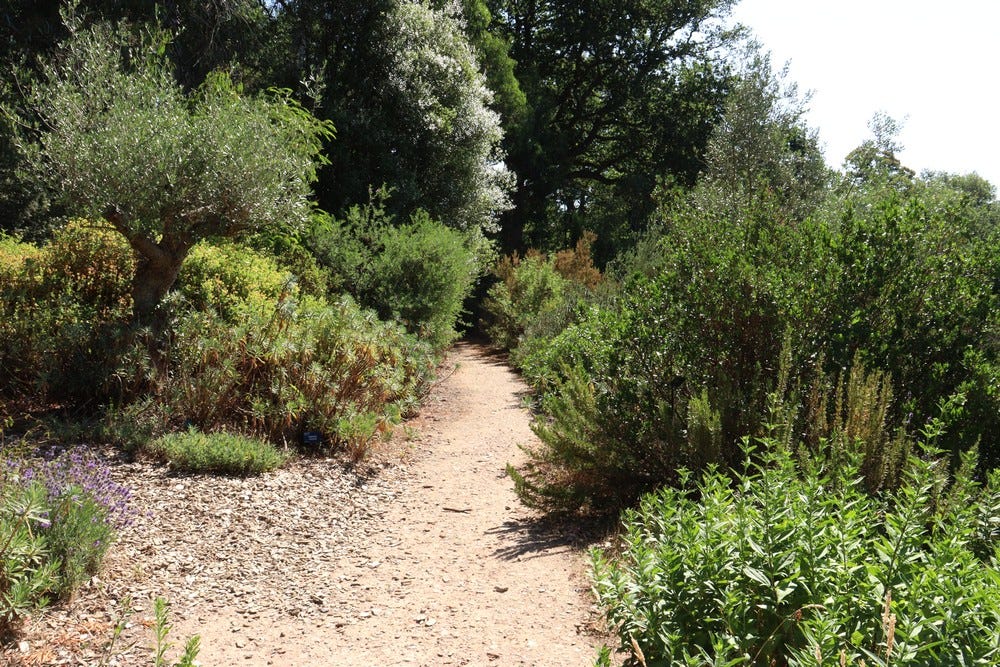
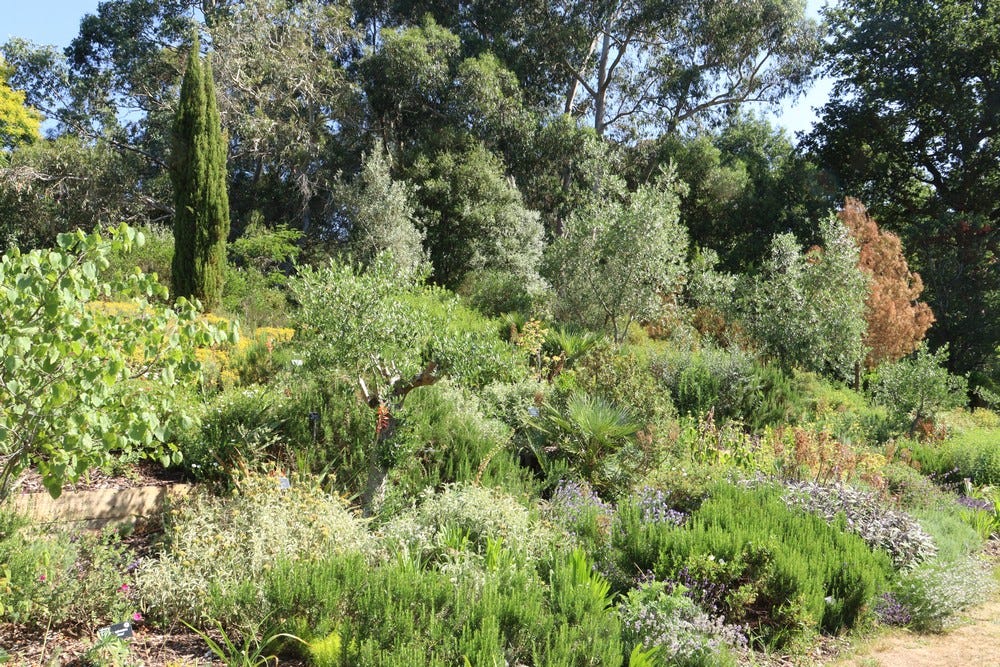
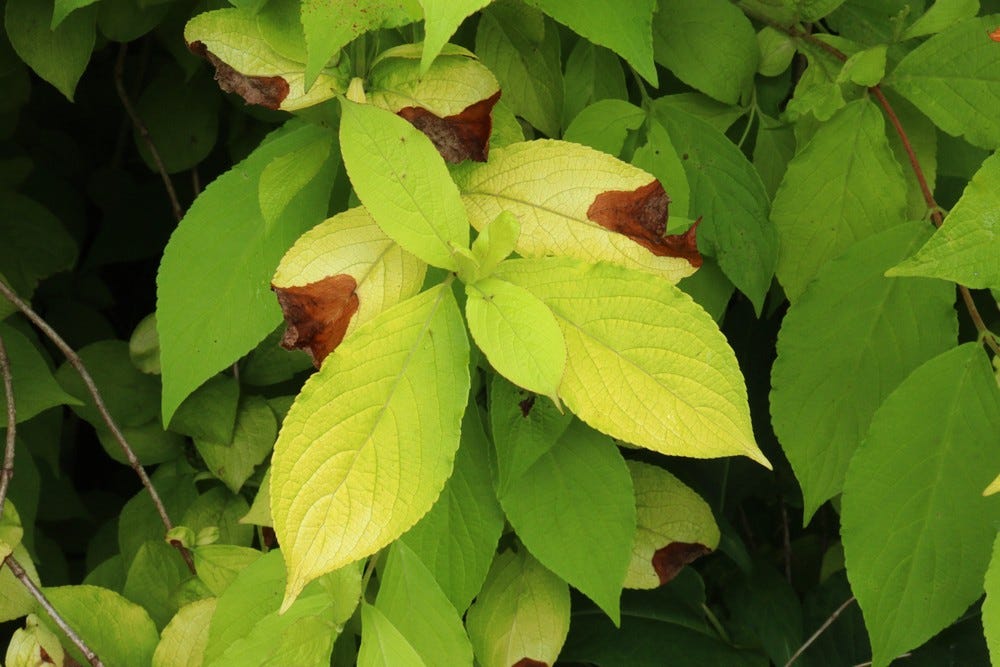

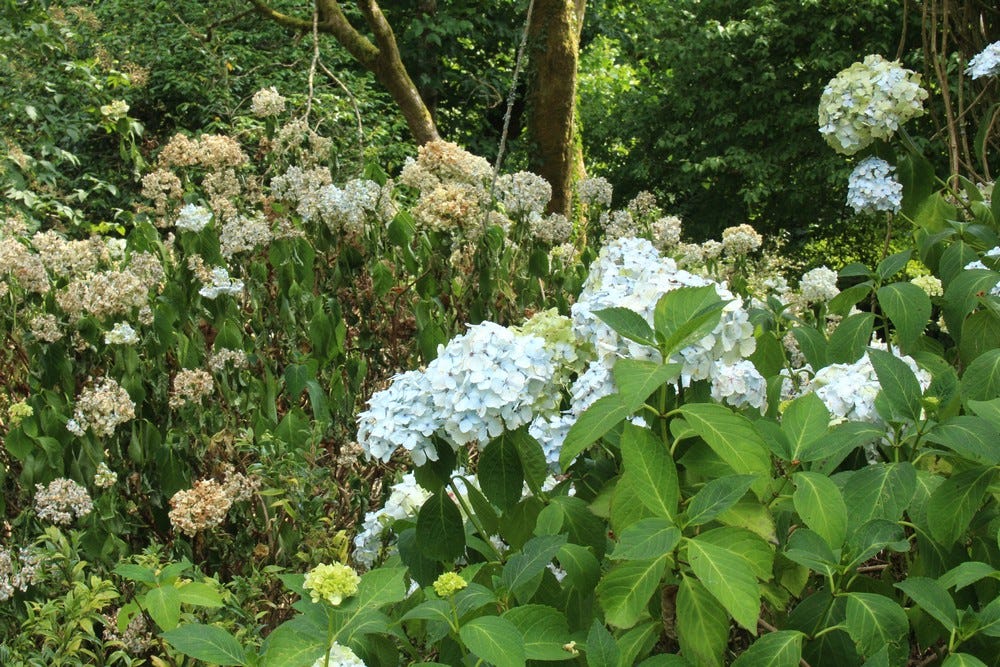
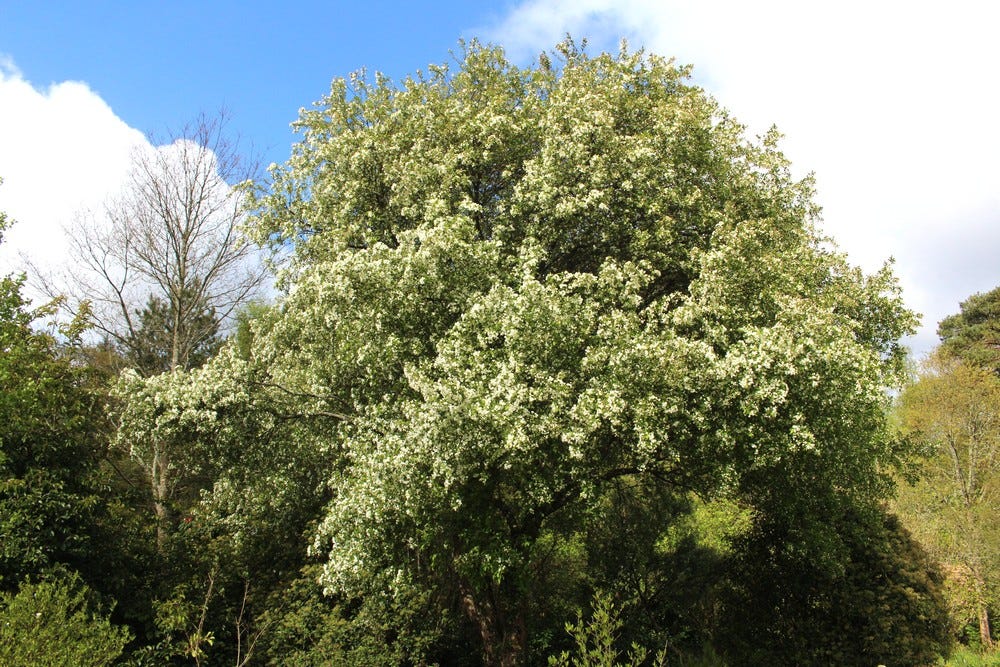
This makes lots of sense. Thanks.
Excellent piece with lots to think about- thanks